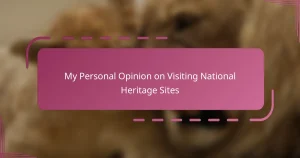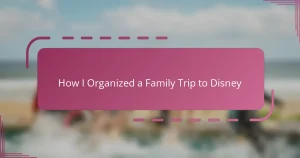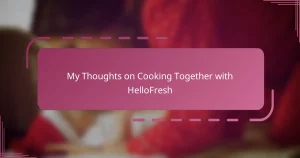Key takeaways
- Parenting activities, like playing with LEGO, foster emotional growth and deepen connections between parents and children through shared experiences.
- LEGO serves as a tool for creativity, problem-solving, and communication, allowing parents to engage meaningfully with their children.
- Creating a comfortable and organized play environment enhances creativity and encourages teamwork during LEGO sessions.
- Reflecting on LEGO experiences reveals the importance of patience, empathy, and trust built through playful interactions.
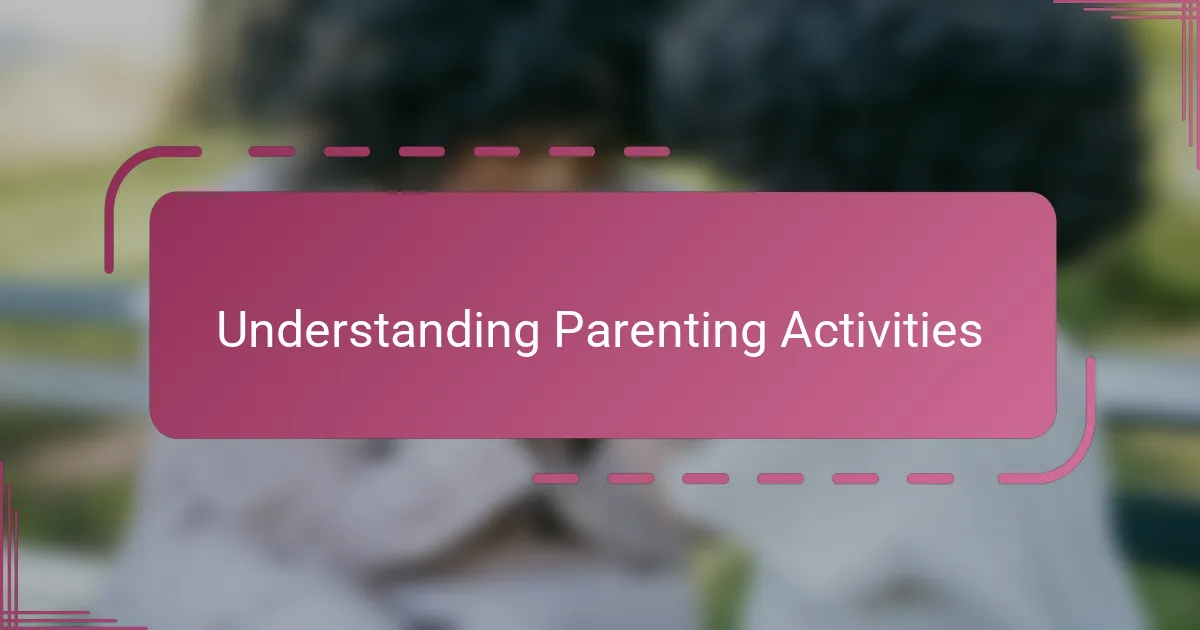
Understanding Parenting Activities
Parenting activities are more than just keeping kids busy; they are moments where connection happens. Have you ever noticed how simple shared experiences can deepen bonds without any elaborate plans? From my own time with my children, I’ve realized that the value lies in the intention behind the activity, not its complexity.
When I think about activities I choose, I often ask myself, “Will this create space for conversation or laughter?” This mindset shifted how I view parenting—less about managing time and more about nurturing relationships. It’s these small intentional acts that often become cherished memories for both kids and parents.
Understanding parenting activities means recognizing their role in emotional growth—for both sides. These moments offer kids a sense of security and adults a chance to reconnect with their child’s world. Isn’t it fascinating how doing something as simple as building with LEGO can open doors to understanding, empathy, and joy?
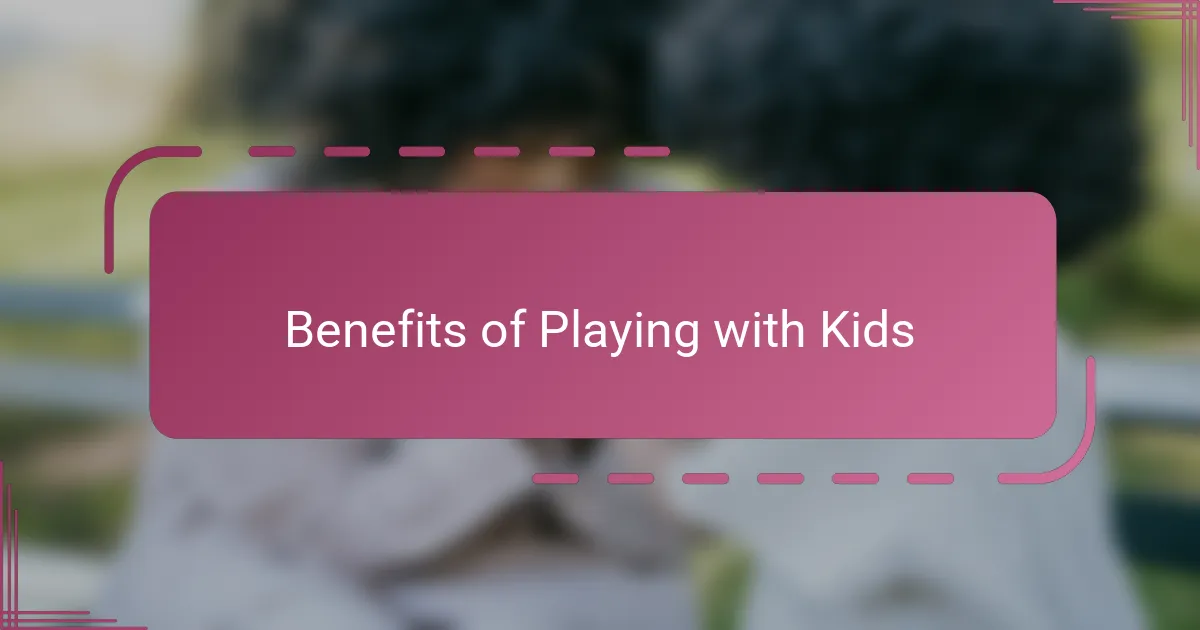
Benefits of Playing with Kids
Spending time playing with my kids isn’t just about having fun—it’s about building trust and showing them they matter. When we sit down with LEGO blocks, I see their faces light up, and I know I’m giving them more than toys; I’m giving them attention, which feels like one of the best gifts a parent can offer. Have you ever noticed how a simple game can soften tough moods and open the door to heartfelt conversations?
I’ve found that playing together boosts my children’s creativity and problem-solving skills, but honestly, it works wonders for me too. It reminds me to slow down, be curious, and see the world through their eyes. Those moments of shared focus and teamwork create a silent language between us—a connection that lasts long after the blocks are put away.
Isn’t it amazing how just a short block-building session can turn into a quiet time of learning and laughter? From my experience, these activities not only nurture their development but also strengthen our emotional bond, making parenting feel less like a duty and more like a joyful partnership.
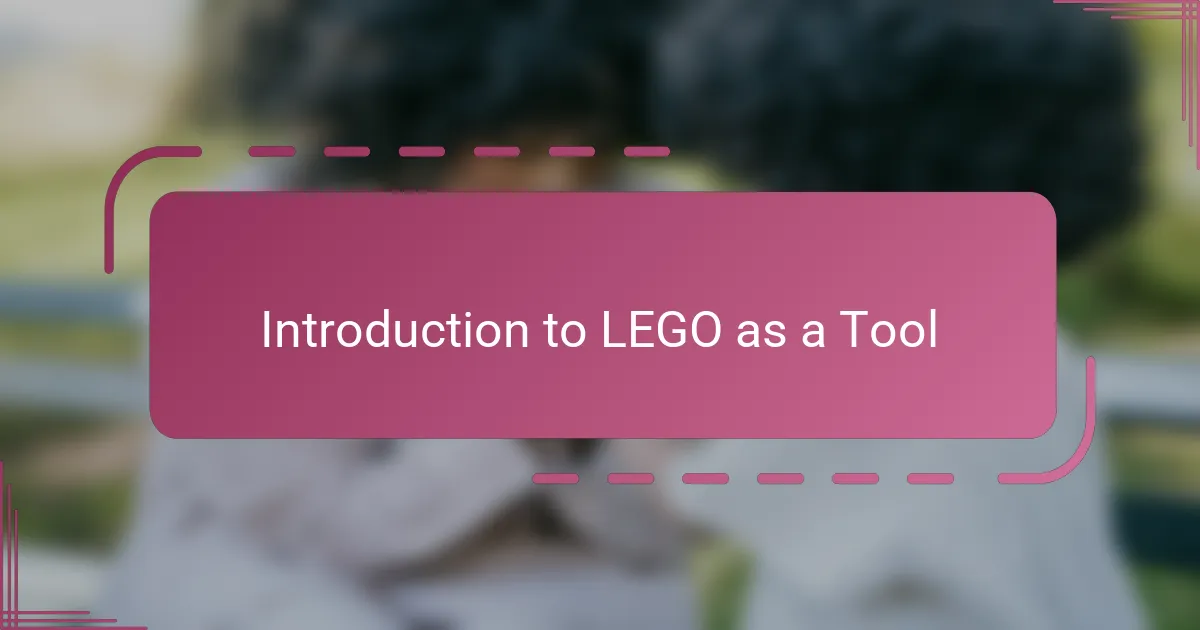
Introduction to LEGO as a Tool
LEGO has always struck me as more than just colorful plastic bricks; it’s a powerful tool that sparks imagination and creativity. When I first brought out a LEGO set at home, I was surprised by how naturally it invited my kids to share ideas and collaborate. Have you ever seen how something so simple can turn into a gateway for meaningful interaction?
From my experience, LEGO encourages problem-solving in a way that feels like play rather than schoolwork. Each piece fits somewhere, and figuring out where teaches patience and persistence without any pressure. I often catch myself marveling at how these tiny blocks teach life lessons through hands-on fun.
What’s really remarkable is how LEGO provides a language without words—a shared focus that bridges generations. Sitting together, building stories with bricks, I realized it wasn’t just about construction but about building memories and trust. Don’t you think that’s what every parent hopes for?
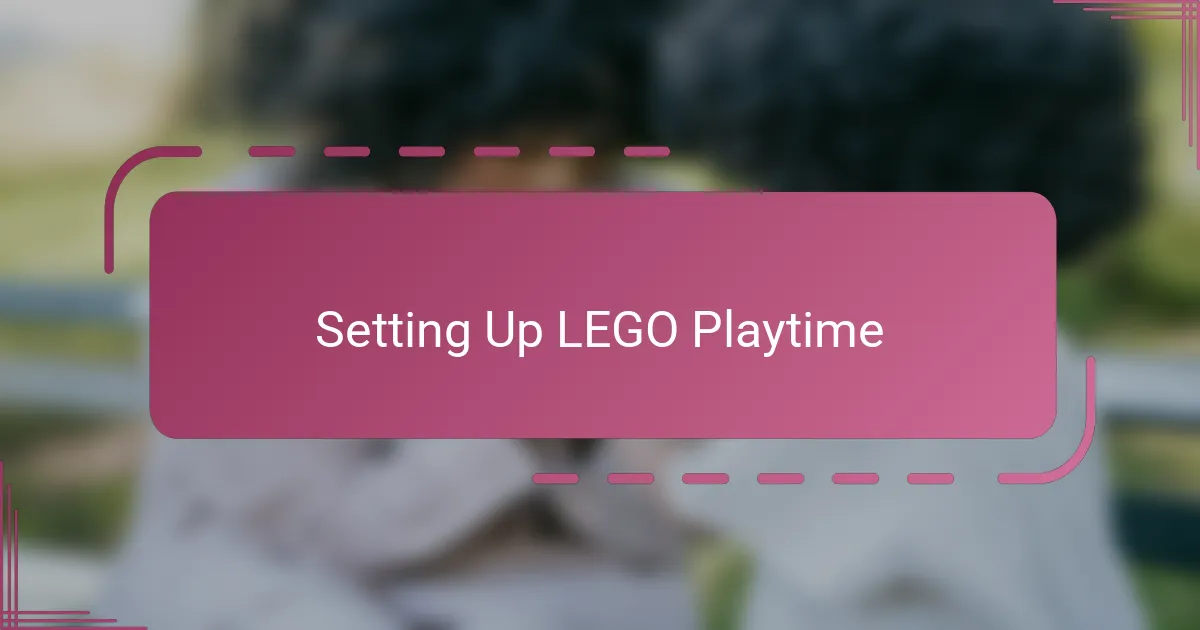
Setting Up LEGO Playtime
Choosing the right spot for LEGO playtime made a huge difference in how we connected. I found that setting up a well-lit, comfortable area where all the bricks could be easily reached helped keep frustration at bay. Have you ever noticed how a clutter-free space not only sparks creativity but also makes the whole experience more inviting?
Organizing the LEGO pieces before we start is something I never skip. Sorting bricks by color or shape became a little ritual that my kids look forward to, and it quietly teaches them about order and patience. It’s funny how something as simple as tidying up can turn into a shared accomplishment, right?
Sometimes, I let my kids take the lead on what we build, which keeps their enthusiasm flowing. Offering gentle guidance rather than strict instructions made LEGO play feel more like a team adventure than a lesson. Have you tried stepping back and just enjoying the journey along with your kids? It truly changes the energy in the room.
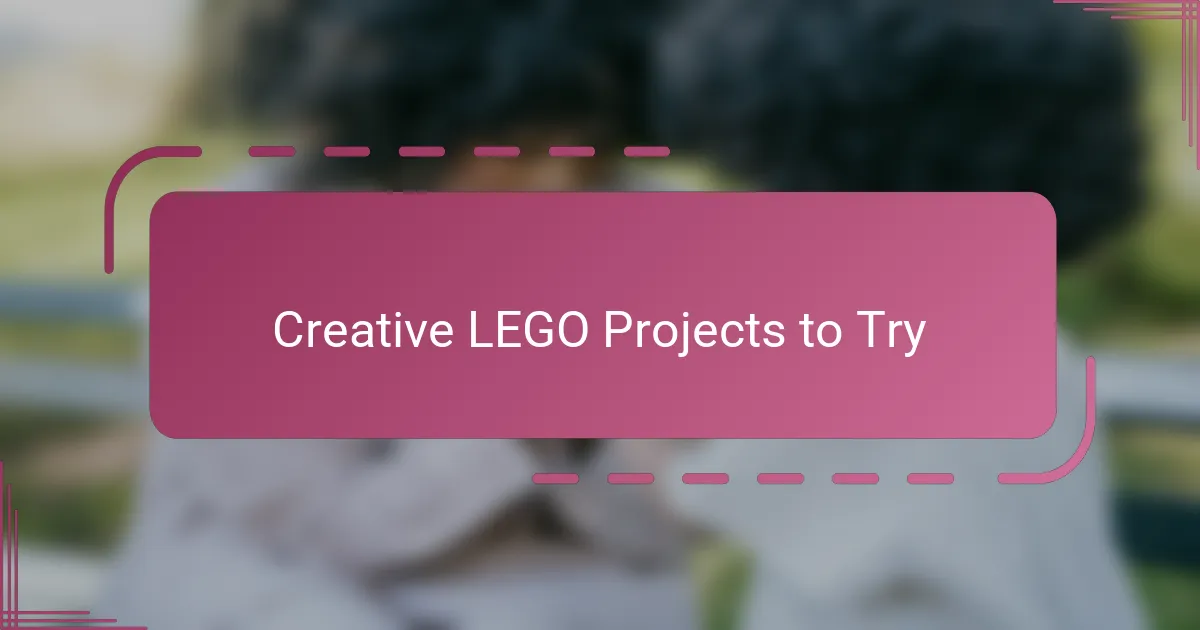
Creative LEGO Projects to Try
One project that always brings out my kids’ creativity is building miniature cities. We’ll spend hours designing roads, parks, and buildings, each taking turns adding our own quirky touches. Have you ever watched your child’s eyes light up when they realize their idea has become part of something bigger? It’s moments like those that make me appreciate how LEGO can turn imagination into teamwork.
Another favorite has been creating custom characters and stories around them. We’ll build heroes, villains, and even pets, and then craft adventures that unfold with each new piece added. I find that this kind of storytelling sparks more than just building skills—it opens up conversations about values, fears, and dreams. Don’t you think sharing stories helps us understand our children in a deeper way?
Sometimes, we challenge ourselves with themed projects, like recreating a favorite movie scene or inventing futuristic vehicles. It’s amazing how setting a playful challenge motivates all of us to think outside the box. From my experience, these projects not only enhance problem-solving but also turn ordinary evenings into memorable quests full of laughter and discovery.
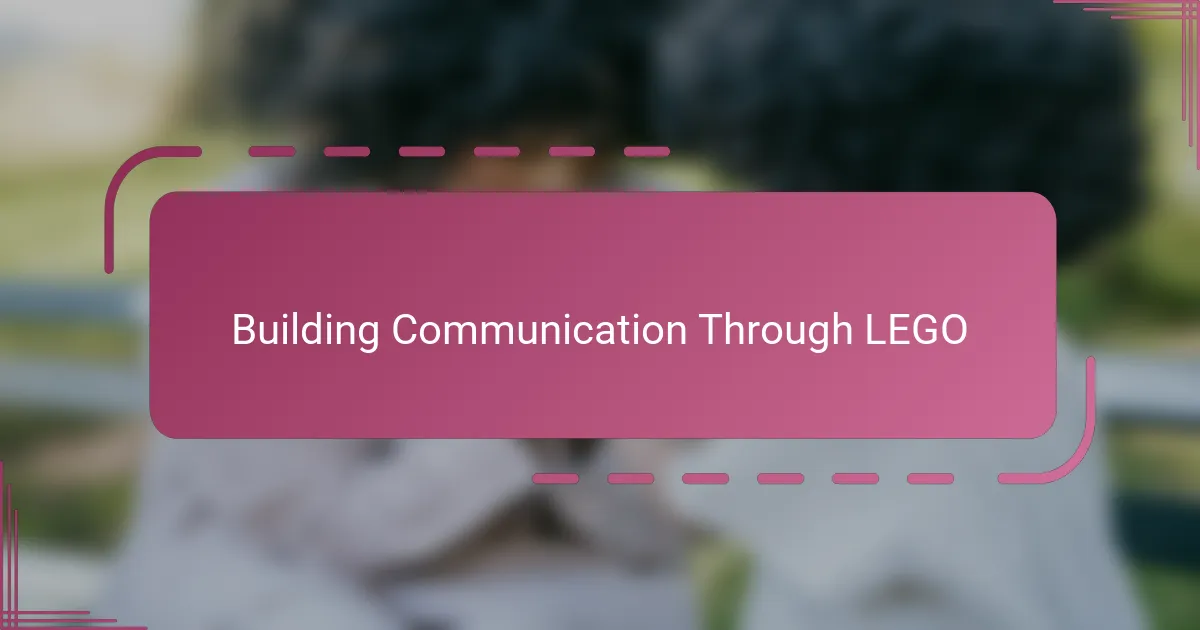
Building Communication Through LEGO
There’s something uniquely powerful about how LEGO naturally creates space for conversation. When my kids and I focus on building together, we start sharing ideas almost effortlessly, whether it’s about what to create next or how to fix a tricky connection. Have you ever noticed how those little bricks seem to invite your child to open up in ways that everyday talks sometimes don’t?
I’ve found that LEGO doesn’t just build structures; it builds understanding between us. While assembling a complicated set, my son once expressed frustration, and that moment opened the door for me to talk about patience and teamwork without sounding like a lecture. That kind of communication feels authentic and gentle, wrapped up in shared activity rather than direct advice.
Sometimes, it’s the quiet moments—passing pieces back and forth or brainstorming solutions—that say the most. I cherish how LEGO play lets us express emotions and ideas nonverbally, creating a shared language. Isn’t it amazing how simple blocks can become a bridge connecting hearts and minds?
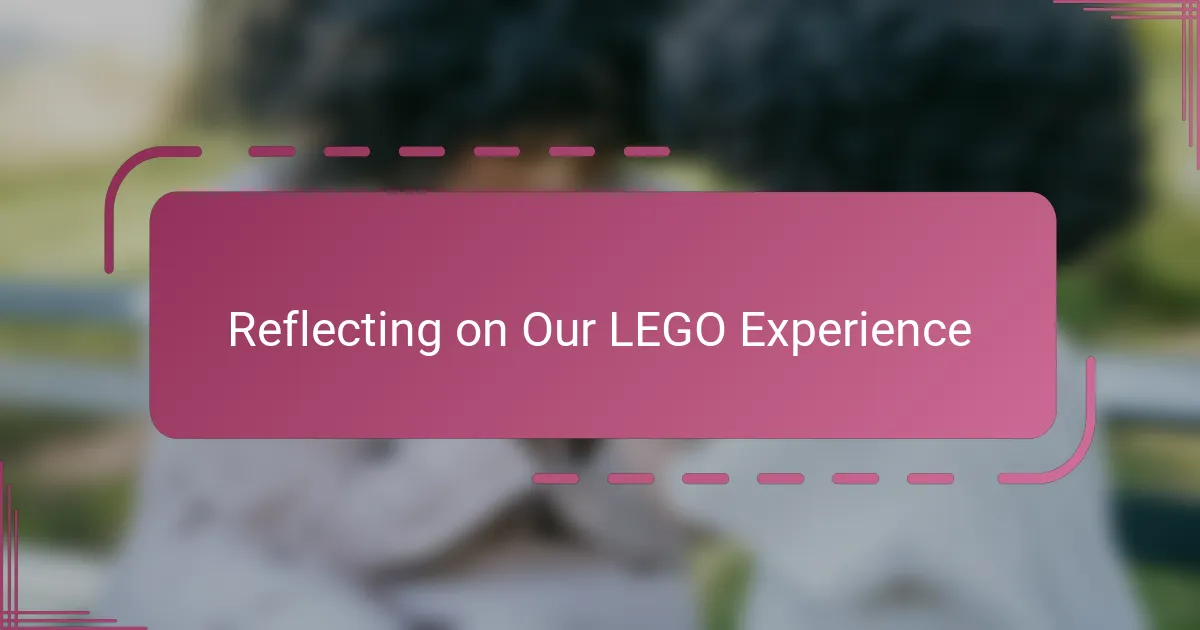
Reflecting on Our LEGO Experience
Reflecting on our LEGO experience, I often find myself amazed at how these tiny blocks became more than just toys—they turned into bridges connecting our worlds. I remember one afternoon when my youngest proudly showed me a tower she built, her eyes sparkling with pride, and in that moment, I realized we had built something far greater than plastic bricks: trust and confidence.
Sometimes, I think back to those quiet hours spent sorting pieces and deciding what to build next. It wasn’t just the creations that mattered, but the shared focus and laughter that filled the room. Have you ever noticed how those simple moments linger in your heart long after the last block is put away?
What strikes me most is how LEGO fostered patience and empathy between us. Challenges that once sparked frustration became opportunities to coach and encourage, creating a safe space for my children to express themselves. Looking back, I see that this experience wasn’t just about building structures—it was about building lifelong connections.
